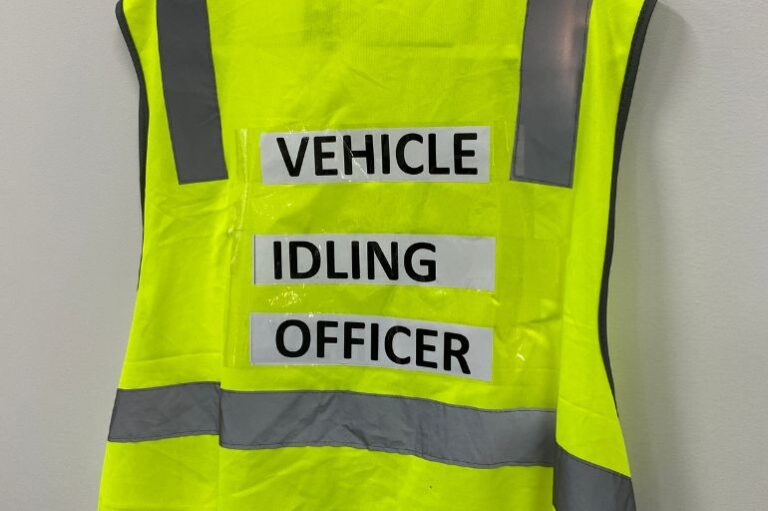In the world of fleet management, vehicle idling is a common but often overlooked issue that can have significant repercussions. Fleet Managers have an important role to play in reducing the CO2 emissions created by excessive idling.
When fleet vehicles spend excessive amounts of time idling, it leads to a range of problems, from increased fuel consumption and maintenance costs to environmental damage. In Australia, where the transport sector is a major contributor to greenhouse gas emissions, addressing the issue of idling is not only economically beneficial but also environmentally crucial.
The problems with excessive idling
1. Increased fuel consumption
One of the most immediate and obvious effects of excessive idling is increased fuel consumption. According to the Australian Government’s Department of Industry, Science, Energy and Resources, a heavy-duty truck can consume around 2 litres of fuel per hour while idling. This can quickly add up, especially for fleets with multiple vehicles. For example, if a fleet of 50 trucks idles for an hour each day, it would result in an additional 100 litres of fuel consumed daily. Over a year, this translates to a substantial financial burden on the fleet’s operating budget.
2. Higher maintenance costs
Idling doesn’t just burn fuel; it also accelerates engine wear and tear. An idling engine operates at a lower temperature, which means the fuel doesn’t combust as efficiently. This incomplete combustion can lead to the buildup of carbon and other residues in the engine, causing damage over time. The increased wear and tear can result in more frequent maintenance and repairs, further driving up costs.
3. Environmental impact
The environmental impact of idling cannot be overstated. The National Transport Commission reports that transport is Australia’s third-largest source of greenhouse gas emissions, contributing around 18% of the total emissions. Idling vehicles emit unnecessary pollutants, including carbon dioxide (CO2), nitrogen oxides (NOx), and particulate matter. These emissions contribute to air pollution and have adverse effects on public health and the environment. Reducing idling time is a straightforward way to decrease these harmful emissions and help Australia meet its emission reduction targets.
Strategies to reduce idling time
1. Driver training and awareness
Educating drivers about the impact of idling and how to reduce it is a fundamental step. Training programs can be implemented to teach drivers the importance of turning off the engine when the vehicle is stationary for more than a couple of minutes. Providing information on the financial, environmental, and regulatory aspects of idling can motivate drivers to adopt better habits.
2. Implementing idle reduction technologies
There are various technologies available that can help reduce idling time. Automatic engine shut-off systems, for instance, can turn off the engine after a set period of inactivity. Additionally, auxiliary power units (APUs) can provide power for heating, cooling, and other functions without the need for the main engine to run. Investing in these technologies can lead to significant fuel savings and reduce wear and tear on the engines.
3. Monitoring and reporting
Utilising telematics systems to monitor vehicle idling is another effective strategy. These systems can provide real-time data on idling times and help identify patterns or problem areas. Fleet managers can use this data to set benchmarks and track progress over time. Reporting tools can generate insights that aid in decision-making and demonstrate the impact of idling reduction initiatives.
4. Route optimisation
Optimising routes can also help reduce idling time. By planning more efficient routes, Fleet Managers can minimise the time vehicles spend in traffic or waiting at stops. This not only reduces idling but also improves overall fleet productivity. Route optimisation software can analyse traffic patterns, road conditions, and other factors to recommend the most efficient routes.
5. Incentive programs
Creating incentive programs to reward drivers who consistently minimise idling time can be an effective motivational tool. Recognising and rewarding good practices can encourage a culture of efficiency within the fleet. Incentives could include bonuses, recognition awards, or other benefits.
6. Regular maintenance
Regular maintenance checks can ensure that vehicles are running efficiently and can help identify issues that may cause unnecessary idling. For example, ensuring that air conditioning systems are functioning properly can reduce the need for idling to maintain cabin comfort. Proper tyre maintenance can also improve fuel efficiency and reduce the overall operating time of the vehicle.
Excessive idling of fleet vehicles is a costly and environmentally damaging practice. By implementing strategies such as driver training, idle reduction technologies, monitoring systems, route optimisation, incentive programs, and regular maintenance, Fleet Managers can significantly reduce idling time. These measures not only save fuel and reduce maintenance costs but also contribute to a cleaner environment and help ensure regulatory compliance. In Australia, where the transport sector plays a significant role in greenhouse gas emissions, reducing idling is a critical step towards a more sustainable future.






